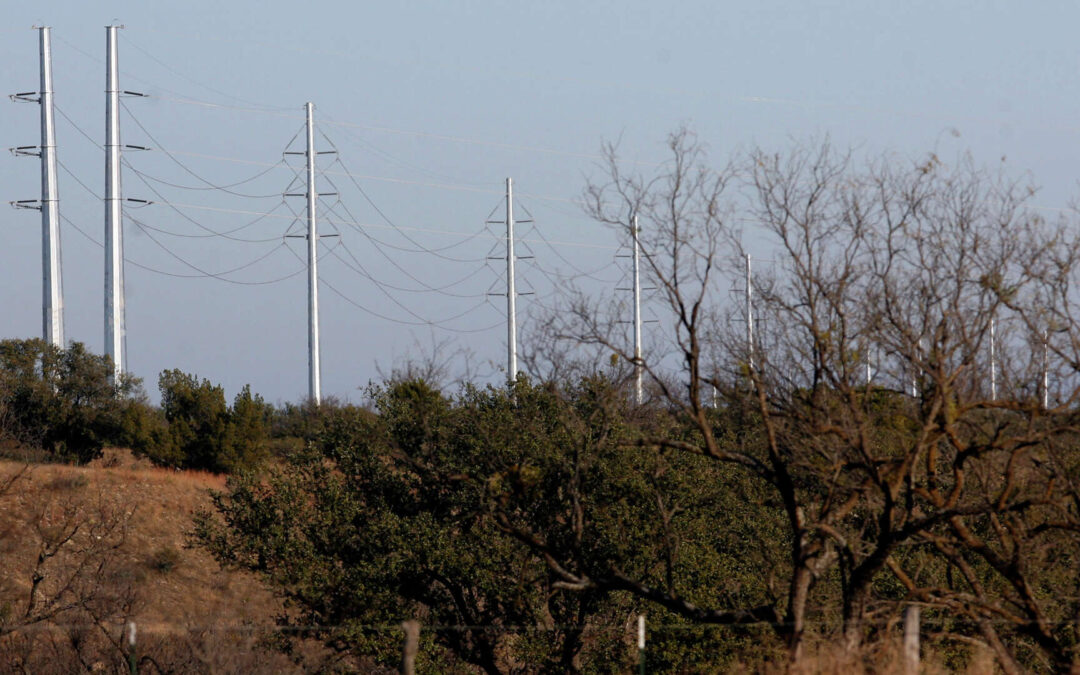Source: Midland Reporter Telegram
High-voltage 765-kV lines will boost grid efficiency, support economic growth, and minimize environmental impact in West Texas.
On April 24, the Public Utility Commission of Texas (PUC) approved the construction of the Permian Basin Reliability Plan using 765-kilovolt (kV) transmission lines. This landmark decision is a crucial step toward addressing the growing energy demands of the Permian Basin, a region that plays a central role in Texas’ energy production and economic prosperity. The approval ensures that Texas’ energy infrastructure can meet the needs of the rapidly expanding oil and natural gas industry, as well as surrounding communities, for years to come.
The PUC’s decision to use 765-kV transmission lines represents the highest-voltage standard in Texas, designed to increase grid efficiency and reliability. These high-voltage lines can carry more electricity over longer distances, reducing congestion on existing transmission lines and enhancing the state’s energy capacity. The decision to adopt the 765-kV lines, instead of the standard 345-kV lines, means that fewer lines will be needed to serve the same area, minimizing disruptions to landowners and reducing the environmental impact.
“Extra high voltage lines are more efficient and strengthen reliability,” said PUC Chairman Thomas Gleeson. “By enabling more power to flow with fewer lines, we can better meet the needs of the Permian Basin while minimizing disruption to Texas landowners and the environment.”
While the 765-kV lines are expected to cost about 22% more than the alternative 345-kV lines, the PUC believes the long-term benefits outweigh the costs. The higher-voltage lines will provide a more efficient energy transmission system, reduce bottlenecks, and improve overall grid stability. The 765-kV lines will also prevent the need for additional infrastructure to meet future demand, ultimately saving money in the long term and making Texas’ energy grid more resilient.
The Texas Oil & Gas Association (TXOGA) expressed strong support for the PUC’s decision, highlighting its importance for both the energy industry and the state’s broader economic growth. Todd Staples, president of TXOGA said that the “decision by the PUC to approve transmission lines in the buildout of the Permian Basin Reliability Plan further reinforces Texas’ ongoing commitment to fostering economic growth, creating jobs, and strengthening our energy independence. We thank PUC Chairman Thomas Gleeson, Commissioners Kathleen Jackson and Courtney Hjaltman, and the staff for their diligent work to advance this critical project.”
Staples emphasized that reliable electricity is key to sustaining oil and gas production, as well as supporting industrial development in West Texas. As Texas continues to lead the nation in oil and gas production, ensuring that energy infrastructure can keep up with growth is vital to maintaining its economic dominance.
The PUC’s decision also addresses important environmental concerns. By using fewer transmission lines to meet energy needs, the project will reduce the impact on Texas landowners, natural habitats, and the overall landscape. This balance of infrastructure development and environmental preservation is crucial for maintaining the state’s commitment to responsible energy production.
Economically, the 765-kV transmission lines will help create jobs and stimulate growth in the region. The construction of these lines will require skilled labor and provide opportunities for local businesses, while the improved energy reliability will support broader industrial growth throughout West Texas.
The PUC’s decision to approve the 765-kV transmission lines for the Permian Basin is a critical step in securing Texas’ long-term energy future. The move will strengthen the state’s energy grid, support economic growth, and help Texas maintain its position as a global energy leader. As the state’s energy needs continue to grow, the 765-kV lines will provide the foundation necessary to ensure Texas remains at the forefront of energy production and distribution.

